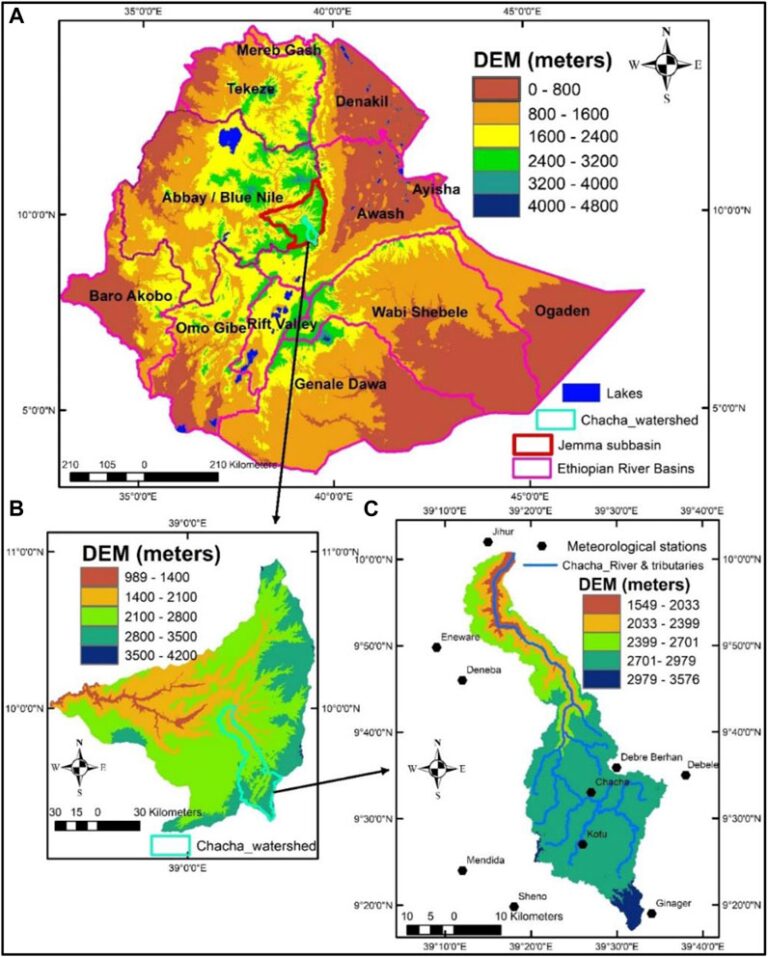The article discusses the irrigation potential of the Chacha River Watershed in Ethiopia, estimating that 13,336.5 hectares of land is highly suitable for surface irrigation, while only 2,159 hectares is currently irrigated. The study emphasizes the importance of irrigation in improving agricultural productivity amid climate variability, as Ethiopia’s agriculture mainly relies on seasonal rainfall, which has been unpredictable and resulted in food insecurity.
Using GIS and the Analytic Hierarchy Process (AHP), the study assessed various factors affecting irrigation suitability, including soil types, land cover, slope, drainage, and proximity to water sources and markets. It found that approximately 11,176.7 hectares of land could be developed for irrigation based on available water from the Chacha River, which has a minimum flow of 0.087 m³/s.
The research highlights the need for infrastructure development, such as small-scale dams, to collect water during the wet season to support irrigation in the dry months. The findings aim to inform policymakers and agricultural planners, promoting irrigation as a critical strategy for enhancing food security and improving local livelihoods.


